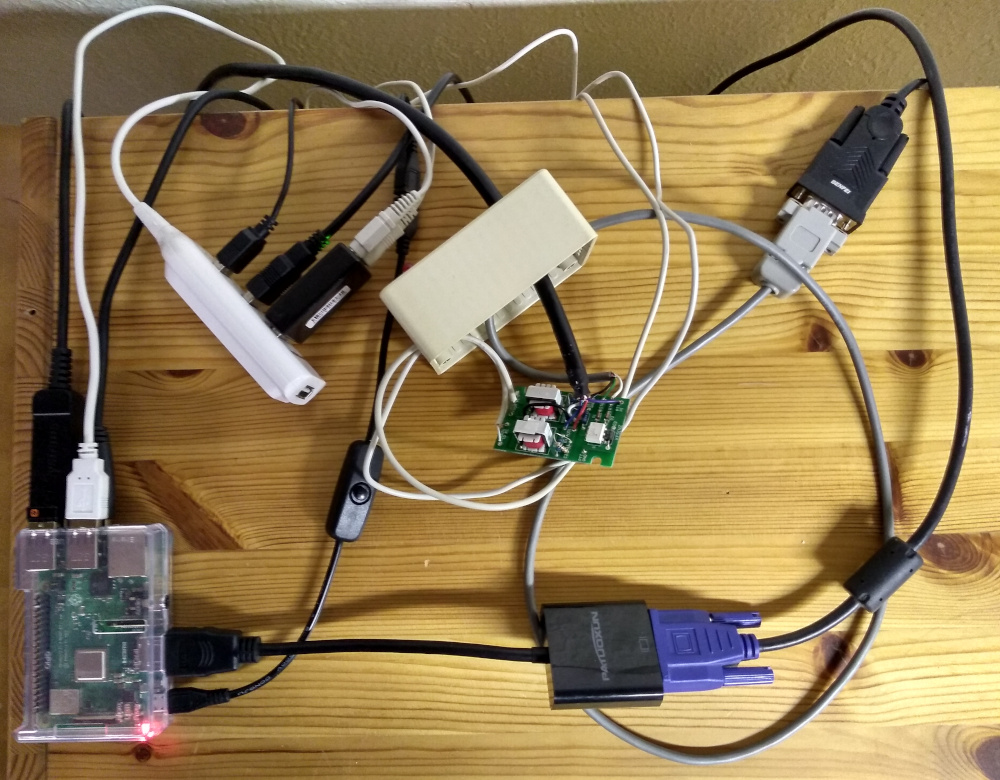 Home
Biography
Talks
Publications
Service
Home
Biography
Talks
Publications
Service
I have tinkered for years with the Raspberry Pi, having used them for teaching computing as well as in service projects. The Raspberry Pi provides a low cost, low power, flexible, nifty computer about the size of deck of cards. For these reasons, I was drawn to exploring its use also in ham radio applications.
I have been experimenting with HF digital modes. I have an Icom IC-718 and have built an interface between my rig and a Raspberry Pi 3 Model B+. The audio and PTT lines are fed from a 13-pin DIN connector at the rear of the rig to the Raspberry Pi through an interface board. The interface uses a modified "easy digi" board which was assembled using lead-free (RoHS) solder.
Since the Raspberry Pi is not equipped with a quality audio output or mic input, a modest USB audio interface was used. The speaker/mic lines are connected to the rig through small audio transformers for isolation. The audio lines pass through simple resistor dividers to scale the voltage input so it is suitable to the mic input of the rig and the the mic input of the USB audio adapter. (Series capacitors were originally used, but replaced since they limited the low frequency response of the audio signals).
The PTT (push-to-talk) line is controlled using the RTS/DTR line from a modest USB serial interface from the Raspberry Pi and fed through an optocoupler for isolation. (Note that the IC-718 VOX does not work when feeding audio in through the modulation input, hence the need for a separate PTT line). A second serial interface provides a CI-V connection for the IC-718 so that the frequency and mode can be read and controlled through software.
The Raspberry Pi is booted from an external USB hard drive running Raspbian. I have found that the ham software in the repositories is often out-of-date, and so I install the software directly. I make use of the following programs running on my Raspberry Pi:
An image of the Raspberry Pi setup as well as the interface electronics and wiring is shown below.
 |
 |

::: {style=“text-align:center”} A "Waterfall" plot showing some FT8
signals on HF as shown using WSJT-X :::